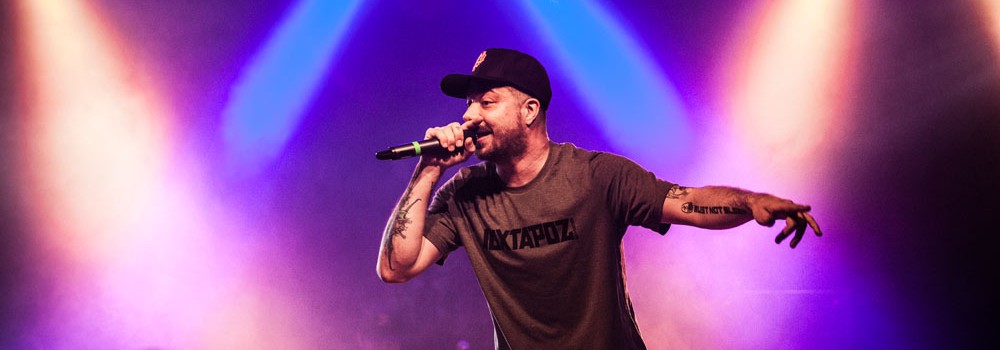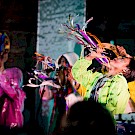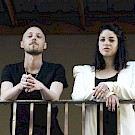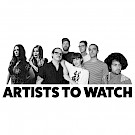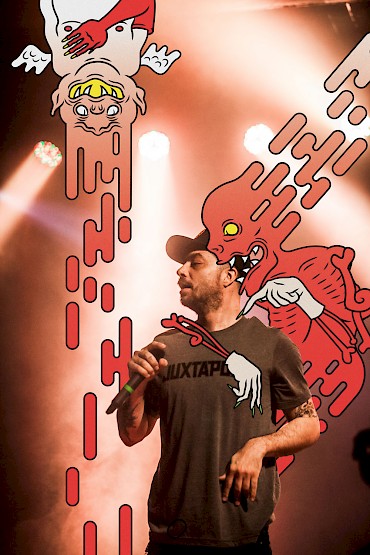 Aesop Rock at the Wonder Ballroom in May—click to see more photos by Sam Gehrke from Aes' last Portland appearanceAt 40 years old, Ian Bavitz, aka Aesop Rock, is proving that age is just a number as he inches closer to becoming a household name without ever departing from his underground roots. Bavitz has been chipping away at a comfortable cave for himself in the indie rap scene for 20-plus years, releasing seven albums and four EPs since 1997, along with a handful of oddball collaborative efforts, teaming up with artists such as Tobacco, Kimya Dawson and The Mountain Goats’ John Darnielle. In 2007, he was commissioned to make a conceptual 45-minute instrumental track for Nike’s iPod-integrated running system, and in 2014, Polygraph’s Matt Daniels crowned the man nicknamed Bazooka Tooth (also the title of his fourth record) with “The Largest Vocabulary in Hip-Hop,” towering over the competition with a total of 7,392 unique words used. In a brief analysis of his findings, Daniels wrote, “his datapoint is so far to the right that he should be off the chart.” Aes’ creative output has been nothing short of astounding.
Aesop Rock at the Wonder Ballroom in May—click to see more photos by Sam Gehrke from Aes' last Portland appearanceAt 40 years old, Ian Bavitz, aka Aesop Rock, is proving that age is just a number as he inches closer to becoming a household name without ever departing from his underground roots. Bavitz has been chipping away at a comfortable cave for himself in the indie rap scene for 20-plus years, releasing seven albums and four EPs since 1997, along with a handful of oddball collaborative efforts, teaming up with artists such as Tobacco, Kimya Dawson and The Mountain Goats’ John Darnielle. In 2007, he was commissioned to make a conceptual 45-minute instrumental track for Nike’s iPod-integrated running system, and in 2014, Polygraph’s Matt Daniels crowned the man nicknamed Bazooka Tooth (also the title of his fourth record) with “The Largest Vocabulary in Hip-Hop,” towering over the competition with a total of 7,392 unique words used. In a brief analysis of his findings, Daniels wrote, “his datapoint is so far to the right that he should be off the chart.” Aes’ creative output has been nothing short of astounding.
Despite the massive volume of material processed by thousands of listeners through music, movies and video games (can somebody say Tony Hawk?), Aesop Rock is experiencing a lot of firsts relatively late in his career. On June 13, he made his first-ever network TV appearance on The Late Show with Stephen Colbert, shining a much-deserved light on a talent that’s been simmering below the surface for almost two decades. His latest album, The Impossible Kid, which was released by Rhymesayers Entertainment on April 29, has charted higher than any previous effort and is a crowning achievement in his self-produced projects, maintaining his ridiculously dense wordplay notoriously riddled with metaphors, word games and acrobatic rhyme schemes.
Another first for Bavitz is the Pacific Northwest. A former resident of New York, and more recently San Francisco, Aesop Rock now calls Portland home. He made the move preceding work on The Impossible Kid and continues to work on various projects in the area. I recently had the chance to sit down with him to talk about his creative process, getting older, his cat, and his new home in the City of Roses.
You’ve previously lived and worked in Boston, New York and San Francisco—all cities with pretty impressive art and music communities. How has Portland differed?
 Click to see more photos by Sam Gehrke of Aesop Rock at the Wonder Ballroom in MayI must admit I don’t really insert myself into this city as much as I perhaps should. It is beautiful and has served as a great place to find some peace while I work away—but ultimately I am in a phase where work and saving money are my priorities. It’s been great for that. My creative process has been fairly similar for many years, and my studio is shitty enough to be moved and re-setup with relative ease. I have been back on my skateboard a ton since being here too, which has felt great. Ultimately, any environment is what you make of it.
Click to see more photos by Sam Gehrke of Aesop Rock at the Wonder Ballroom in MayI must admit I don’t really insert myself into this city as much as I perhaps should. It is beautiful and has served as a great place to find some peace while I work away—but ultimately I am in a phase where work and saving money are my priorities. It’s been great for that. My creative process has been fairly similar for many years, and my studio is shitty enough to be moved and re-setup with relative ease. I have been back on my skateboard a ton since being here too, which has felt great. Ultimately, any environment is what you make of it.
I’ve lived in Oregon my whole life, and as a photographer, I am infatuated with the idea of moving to one of the cities you’ve lived in, simply because of their reputations as creative meccas. What’s it like coming from those places to a less creatively established city like Portland?
I mean, Portland feels pretty creative to me, but I know what you mean. People go to those places to be surrounded by that vibe. People come to places like this to get away from it. I have identified with both of those things—the need to be up in the mix, and the need to get the hell out of the mix. I can see wavering between those two feelings forever, and just jumping ship when I need a change.
Based on the first singles from your latest record, I’ve noticed that the tracks seem to be quite a bit more autobiographical than any of your previous work, and considerably less abstract. “Rings,” the first single, is about your love for drawing and painting, while “Blood Sandwich” centers around your relationship with your brothers. Why the shift to more literal, reflective self-exploration?
That’s the kind of thing I don’t notice I’m doing until people tell me. I see it though, and can only chalk it up to getting older. I think turning 40 has been in the back of my head for awhile, and it seemed like as good a time as any to reflect. I’ve needed to adapt my writing from the social life of an early 20-something making the most of a bubbling rap scene, to just growing into other things. You hit these moments where you realize you feel like you’re past what you did yesterday and need to find something new. That’s probably the biggest challenge in all of this: attempting to age gracefully in a field that champions youth.
You recently did a collaborative EP with Homeboy Sandman called Lice. There’s a track on there (“So Strange Here”—listen below) that really struck a chord with me, and kind of choked me up. It was very sweet, for lack of a better word. There’s more positivity, in the least sentimental way possible, permeating your music these days. Do you see yourself as a happier person in contrast to 10 or 15 years ago?
Ha. No. I feel like I’m always just barely keeping my head above water. The concept of arriving at a place where all of this is easy is just foreign to me. I’ve never felt a moment of coasting. But maybe that’s it in itself. You try to get to a place where you make peace with the fact that you’ll never be truly at peace. Yikes.
You’re known for the dense content matter of your music, and it’s oftentimes a pretty intimidating mix of intricate, varied vocabulary and heavy metaphors. What do you like to read in your free time?
Most of my reading is news and science articles. I’m not really a novel guy, which is something I’ve gotten shit about forever. I’ll read National Geographic, or bounce around news articles on Reddit, or look at The New York Times. Lately at the end of the day, I just take in everything I can about what happened that day in the presidential race, which is fascinating and depressing. I guess I’m more into current events than ever before.
 I’ve always loved that you collaborate with amazing visual artists for your album art. The Impossible Kid features designs by Alex Pardee, and you’ve frequently worked with Jeremy Fish on various projects. What value do you put on an album’s cover art?
I’ve always loved that you collaborate with amazing visual artists for your album art. The Impossible Kid features designs by Alex Pardee, and you’ve frequently worked with Jeremy Fish on various projects. What value do you put on an album’s cover art?
I always take the album-making process as an excuse to collaborate with a visual artist I am a fan of. I feel like during the making of the songs, imagery floats around in my head. At some point I try to match that imagery to the right person and find someone who can really elevate the entire project. I don’t want just an album cover; I want the artist to be as invested as I am and create a world to accompany the music. The idea of spending years on a project to then slap a two-second cover on it is not something that makes sense to me—I see it as a chance to further the entire mission. I’ve been insanely lucky to work with the people I’ve worked with.
Cats seem to be a very prominent theme on your albums as of late. You have a track called “Kirby” on The Impossible Kid that’s an ode to your kitty. What’s up with you and cats?
Kirby was just my little dude this time around. It feels nice to take care of something. I’m a humongous animal fan—to be honest, I always think that if things hadn’t gone as they did, I might have attempted to do some work with animals in some capacity. I still think about it. It feels good to take care of something and keep it alive.
What’s next for you?
I have a few other projects on the table. I’ve been mixing the score I created for an upcoming movie called Bushwick, which will come out later in the year. An EP I produced for Blueprint is out now. And I also have a bunch of demos made towards a new project that’s probably too early to announce. But basically work. I might move back east. I might move to another planet. I dunno we’ll see.

